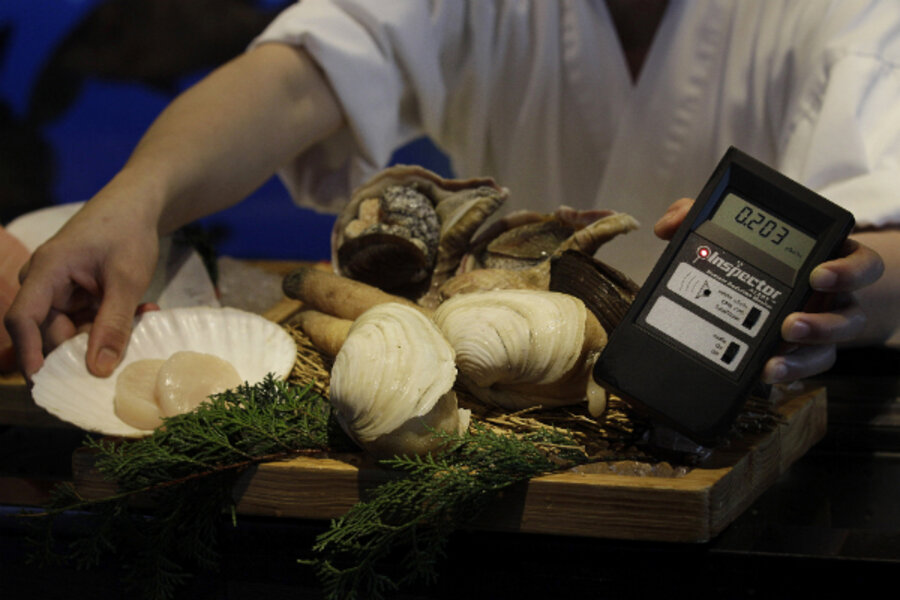Japan says high seawater radiation levels are no cause for alarm
Loading...
| Shingu, Japan
As engineers reported progress on stabilizing overheated reactors at the Fukushima Daiichi nuclear power plant Tuesday, elevated levels of radiation have been found in seawater nearby, fueling concern over long-term environmental and health impacts.
Plant operator Tokyo Electric Power Company (TEPCO) announced today that in samples taken 1,100 feet south of the plant on Monday, radioactive iodine exceeded legal limits for wastewater by 126.7 times, cesium-134 by 24.8 times, and cesium-137 by 16.5 times. Samples taken 16 kilometers (10 miles) south were up to 16 times above legal levels.
Radioactive elements in the ocean will not likely pose a threat to human health because they quickly become diluted, says Masaharu Hoshi, a specialist in environmental impact assessments at Hiroshima University’s Research Institute for Radiation Biology and Medicine. He says contamination of seawater was not a problem following the atomic bombing of Hiroshima and Nagasaki.
However, Jun Misono of Tokyo’s Marine Ecology Research Institute said that while radioactive iodine breaks down relatively quickly, cesium is more persistent and can accumulate in marine animals, such as fish. “We need to carefully monitor the amount of radiation that continues to be emitted and evaluate the impacts,” he told national broadcaster NHK.
The science ministry announced it would begin monitoring seawater at eight locations near the plant.
Food safety concerns
A major concern among citizens is food safety. Yesterday, four prefectures were ordered to stop shipping spinach and another leafy green called kakina. The sale of milk from Fukushima prefecture was banned after high levels of iodine-131 were detected.
But while Japan set legal limits for radioactive contamination in imported foods after the 1986 Chernobyl nuclear disaster, it did not establish similar guidelines and monitoring procedures for domestic products, reports NHK. As a stopgap measure, the health ministry has been using standards recommended by the Nuclear and Industrial Safety Agency, a government watchdog.
The cabinet’s Food Safety Commission said at an emergency meeting Tuesday that it would compile information on health impacts over the coming week.
Recent tests also indicate higher-than-normal levels of radiation in the air well beyond the Fukushima plant’s grounds. Chief Cabinet Secretary Yukio Edano said today that the government has no plans to widen the current 12-mile evacuation zone, however. He also said fruits and vegetables in markets posed no health risk.
A testing team dispatched by the United Nations' International Atomic Energy Association Monday reported radiation levels 1,600 times above normal 12 miles from the Fukushima plant. Constant exposure to those levels for 26 days would lead to a cumulative exposure of 100,000 microsieverts, the level at which Japan’s National Institute of Radiological Sciences says there is an increased risk of cancer.
Workers return to Fukushima
After a temporary halt yesterday, workers this morning resumed their attempts to repair damaged machinery and finish hooking up new electrical cables so the normal cooling system could be restarted.
Manual spraying operations to cool the overheated spent-fuel storage pools continued as well. Though power lines had been connected to at least two of the units, by 6 p.m. Tuesday local time, wiring had yet to be completed.
TEPCO issued its first public apology this afternoon to those affected by the nuclear disaster. Last night, company president Masataka Shimizu had requested a meeting with Fukushima governor Yuhei Sato to offer an apology, but the governor turned him down, citing local people’s extreme anger and unease. The vice president apologized instead during a visit to a shelter near the plant.





